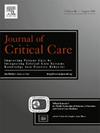医院获得性肺炎:过去、现在和前景。
IF 2.9
3区 医学
Q2 CRITICAL CARE MEDICINE
引用次数: 0
摘要
医院获得性肺炎(HAP)仍然是最常见和最致命的医院获得性感染,导致ICU死亡率、住院时间延长和资源使用。呼吸机相关性肺炎(VAP)是HAP的典型形式,长期以来一直定义着重症监护的风险和意外成本。从历史上看,管理是由时间表,基于培养的诊断,以及气管内管作为挽救生命和致病的核心作用所决定的。这种模式促进了严格的定义和经验性的抗生素策略,但也产生了气道护理、吸入和生物膜生物学方面的持久经验。当代的观点已经转向生态学和宿主反应。从呼吸机相关的气管支气管炎到VAP,连续的呼吸机相关下呼吸道感染(VA-LRTI)已经取代了早晚期VAP的二元模型。定植、生物膜形成和微生物-宿主相互作用现在被认为是感染的动态驱动因素。新的诊断方法——包括多重PCR和下一代测序——提供了快速的病原体和耐药性检测,而生物标志物如降钙素原支持管理和更短的抗生素疗程。对通风性HAP (VHAP)的认识已经模糊了传统的界限。展望未来,精准诊断、免疫监测和人工智能有望将生态和免疫融入个性化管理。HAP治疗的未来不在于更快的抗生素,而在于量身定制的、生态知情的、以宿主为导向的策略,以改善结果并保持危重病人的恢复力。本文章由计算机程序翻译,如有差异,请以英文原文为准。
Hospital-acquired pneumonia: Past, present, and perspectives
Hospital-acquired pneumonia (HAP) remains the most frequent and lethal hospital acquired infection, driving ICU mortality, prolonged length of stay, and resource use. Ventilator-associated pneumonia (VAP), the archetypal form of HAP, has long defined both the risks and unintended costs of intensive care. Historically, management was shaped by timelines, culture-based diagnostics, and the central role of the endotracheal tube as both lifesaving and pathogenic. This paradigm promoted rigid definitions and empiric antibiotic strategies but also generated enduring lessons on airway care, aspiration, and biofilm biology.
Contemporary perspectives have shifted toward ecology and host response. The binary early–late VAP model has been replaced by a continuum of ventilatorassociated lower respiratory tract infections (VA-LRTI), from ventilator-associated tracheobronchitis to VAP. Colonisation, biofilm formation, and microbial–host interactions are now recognised as dynamic drivers of infection. Novel diagnostics—including multiplex PCR and next-generation sequencing—offer rapid pathogen and resistance detection, while biomarkers such as procalcitonin support stewardship and shorter antibiotic courses. Recognition of ventilated HAP (VHAP) has blurred traditional boundaries.
Looking forward, precision diagnostics, immune monitoring, and artificial intelligence promise to integrate ecology and immunity into personalised management. The future of HAP care lies not in faster antibiotics, but in tailored, ecology-informed, host-guided strategies that improve outcomes and preserve resilience in the critically ill.
求助全文
通过发布文献求助,成功后即可免费获取论文全文。
去求助
来源期刊

Journal of critical care
医学-危重病医学
CiteScore
8.60
自引率
2.70%
发文量
237
审稿时长
23 days
期刊介绍:
The Journal of Critical Care, the official publication of the World Federation of Societies of Intensive and Critical Care Medicine (WFSICCM), is a leading international, peer-reviewed journal providing original research, review articles, tutorials, and invited articles for physicians and allied health professionals involved in treating the critically ill. The Journal aims to improve patient care by furthering understanding of health systems research and its integration into clinical practice.
The Journal will include articles which discuss:
All aspects of health services research in critical care
System based practice in anesthesiology, perioperative and critical care medicine
The interface between anesthesiology, critical care medicine and pain
Integrating intraoperative management in preparation for postoperative critical care management and recovery
Optimizing patient management, i.e., exploring the interface between evidence-based principles or clinical insight into management and care of complex patients
The team approach in the OR and ICU
System-based research
Medical ethics
Technology in medicine
Seminars discussing current, state of the art, and sometimes controversial topics in anesthesiology, critical care medicine, and professional education
Residency Education.
 求助内容:
求助内容: 应助结果提醒方式:
应助结果提醒方式:


